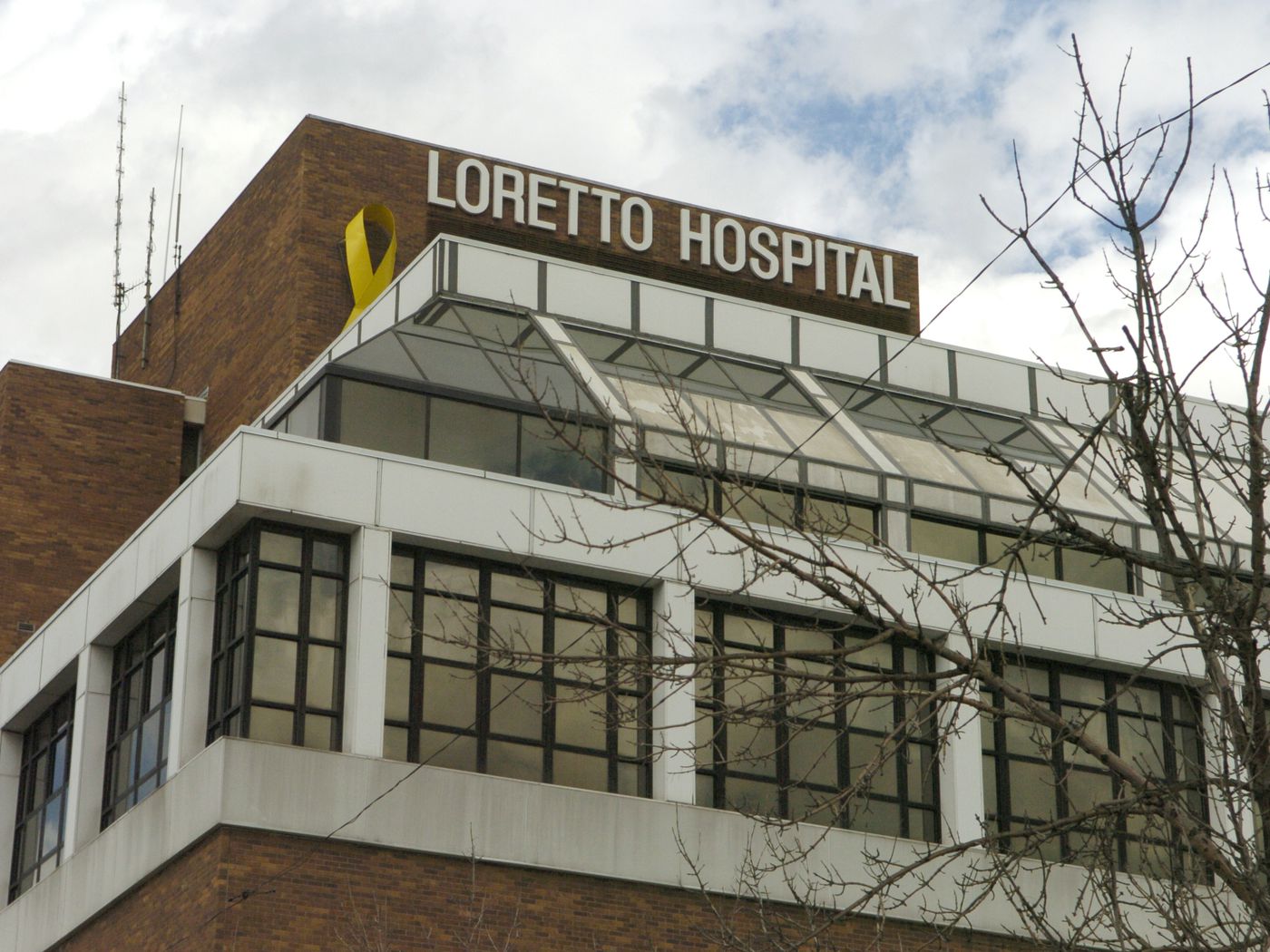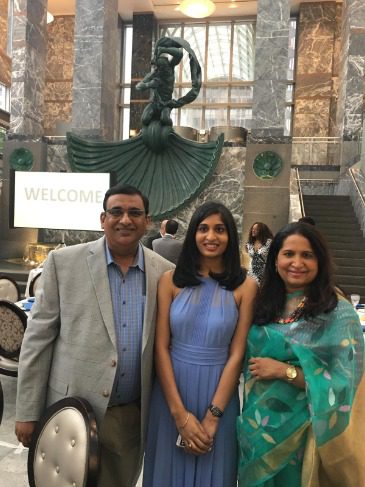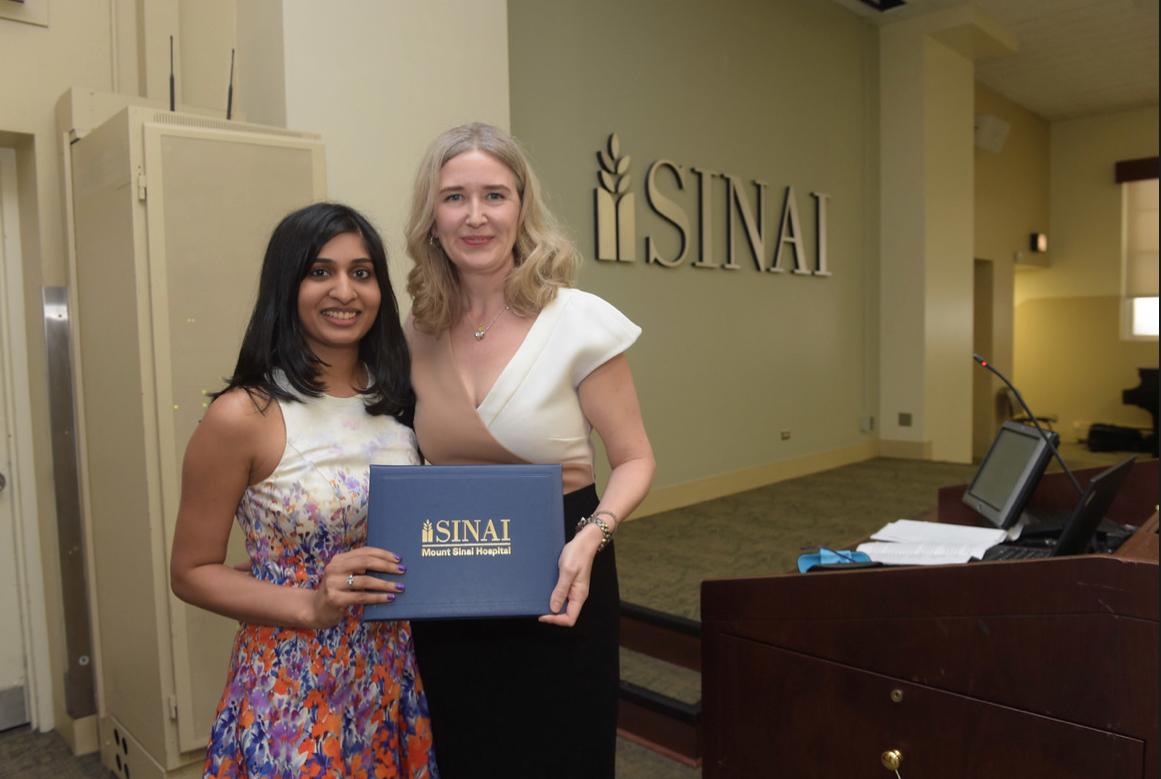Dr Nikhila Juvvadi and her team at the 122-bed Loretto Hospital in Chicago had their task cut out when Covid-19 engulfed the US last year.
At one stage, Chicago’s 60623 zip code had the highest number of people dying in the pandemic. 32-year-old Juvvadi – also Chicago’s youngest Chief Clinical Officer and head of Loretto’s Covid ![]() task force – worked round the clock to tackle the pandemic head-on and save lives. Dr Nikhila Juvvadi became the face of the city’s pandemic management efforts. In December 2020, the self-confessed “in-betweener” also became the first to give Covid-19 jabs to frontline health workers. “As an Indian American, administering the first vaccine was the most amazing moment. The entire experience was surreal. To see a light at the end of the tunnel was wonderful,” Hyderabad-origin Dr Juvvadi told Global Indian in an exclusive interview. The historic moment was celebrated both in the United States and back home in India. African Americans, Asian Americans and Latin Americans from the city community were the first recipients of the vaccine. The reason: Loretto wanted to send out a message that every section will be catered to equitably through the vaccine roll-out process, says Dr Juvvadi, also the hospital’s internal medicine physician and vice president of operations. But convincing people (especially from disadvantaged communities) to get their first jab wasn’t easy in the early days.
task force – worked round the clock to tackle the pandemic head-on and save lives. Dr Nikhila Juvvadi became the face of the city’s pandemic management efforts. In December 2020, the self-confessed “in-betweener” also became the first to give Covid-19 jabs to frontline health workers. “As an Indian American, administering the first vaccine was the most amazing moment. The entire experience was surreal. To see a light at the end of the tunnel was wonderful,” Hyderabad-origin Dr Juvvadi told Global Indian in an exclusive interview. The historic moment was celebrated both in the United States and back home in India. African Americans, Asian Americans and Latin Americans from the city community were the first recipients of the vaccine. The reason: Loretto wanted to send out a message that every section will be catered to equitably through the vaccine roll-out process, says Dr Juvvadi, also the hospital’s internal medicine physician and vice president of operations. But convincing people (especially from disadvantaged communities) to get their first jab wasn’t easy in the early days.
“Listening and answering queries helps,” she says.

Dr Marina Del Rios reacts as she receives Chicago’s first COVID-19 vaccination from Dr Nikhila Juvvadi on Dec 15, 2020.
Journey of an “in-betweener”
Dr Juvvadi has had a unique journey: She was born in Chicago but her family moved back to Hyderabad when she was 11. She went on to study at Nasr Girls School, Kakatiya Junior College and Bhaskar Medical College. In order to fit into her new surroundings in Hyderabad, she learned both Hindi and Telugu.
“I was made fun of for my accent. People at that time could not relate to my experiences or perspectives. I then moved back to the US after college and did the same thing in reverse. For a long time, I was an in-betweener,” she says.
But those experiences helped shape her as a person who now integrates both her American and Indian side in every walk of life. And that makes her a Global Indian.

Loretto Hospital: Where Dr Juvvadi practices.
“I would not be who I am today if my journey was not complicated and unique. I can relate to people wherever in the world they are from. Importantly, I am more confident, outgoing and have a belief that I can achieve anything,” she says. A piece of advice she has for those embarking on a journey: Expect the unexpected and keep one’s eyes and ears open for new learnings from unexpected quarters. “Anyone can teach you things that will be of use to you on your journey, so always engage them and be kind,” she says. One thing that Dr Juvvadi always carries with her is books. “My books stayed with me throughout which made me escape to a make-believe world, especially in those such as The Lord of the Rings.”

With her proud parents.
Indian-ness
Ask her to name one Indian-ness that remained throughout, pat comes the reply:
“My Indian-ness is who I refer to as my family. I am very close to all of my extended family, and they are my support structure.”
Engaging with her folks in Chicago and Hyderabad gives her maximum joy as she can connect with them through shared memories.
Indian Americans who inspire
Dr Juvvadi counts Vivek Murthy, the US Surgeon General, as her favorite Global Indian. Murthy had also co-chaired US President Joe Biden’s Covid-19 advisory board from November 2020 to January 2021. She believes that Global Indians are breaking every glass ceiling and there is no limit. “Brand India has evolved dramatically,” she signs out.

